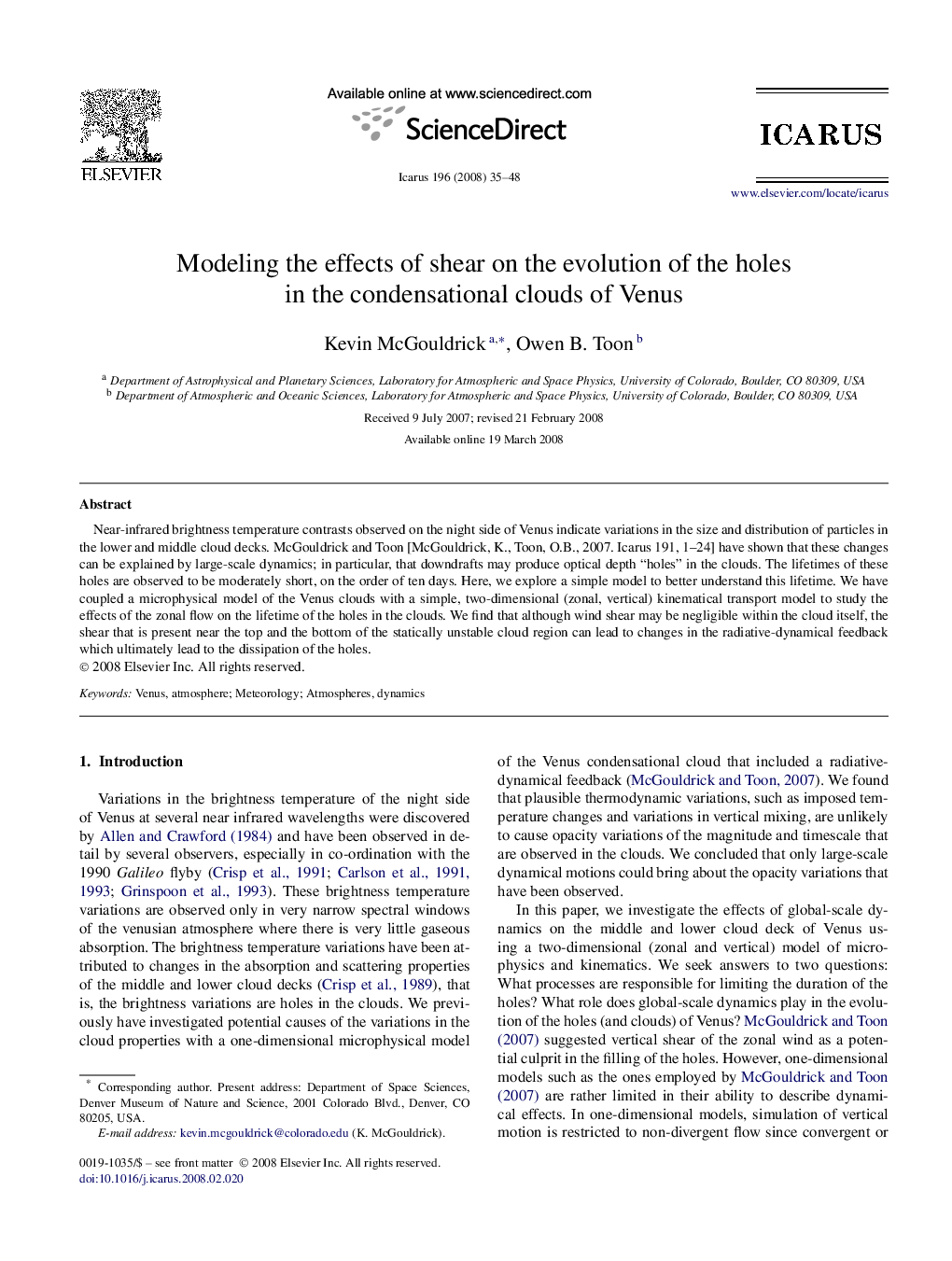| Article ID | Journal | Published Year | Pages | File Type |
|---|---|---|---|---|
| 1775128 | Icarus | 2008 | 14 Pages |
Abstract
Near-infrared brightness temperature contrasts observed on the night side of Venus indicate variations in the size and distribution of particles in the lower and middle cloud decks. McGouldrick and Toon [McGouldrick, K., Toon, O.B., 2007. Icarus 191, 1-24] have shown that these changes can be explained by large-scale dynamics; in particular, that downdrafts may produce optical depth “holes” in the clouds. The lifetimes of these holes are observed to be moderately short, on the order of ten days. Here, we explore a simple model to better understand this lifetime. We have coupled a microphysical model of the Venus clouds with a simple, two-dimensional (zonal, vertical) kinematical transport model to study the effects of the zonal flow on the lifetime of the holes in the clouds. We find that although wind shear may be negligible within the cloud itself, the shear that is present near the top and the bottom of the statically unstable cloud region can lead to changes in the radiative-dynamical feedback which ultimately lead to the dissipation of the holes.
Related Topics
Physical Sciences and Engineering
Earth and Planetary Sciences
Space and Planetary Science
Authors
Kevin McGouldrick, Owen B. Toon,
